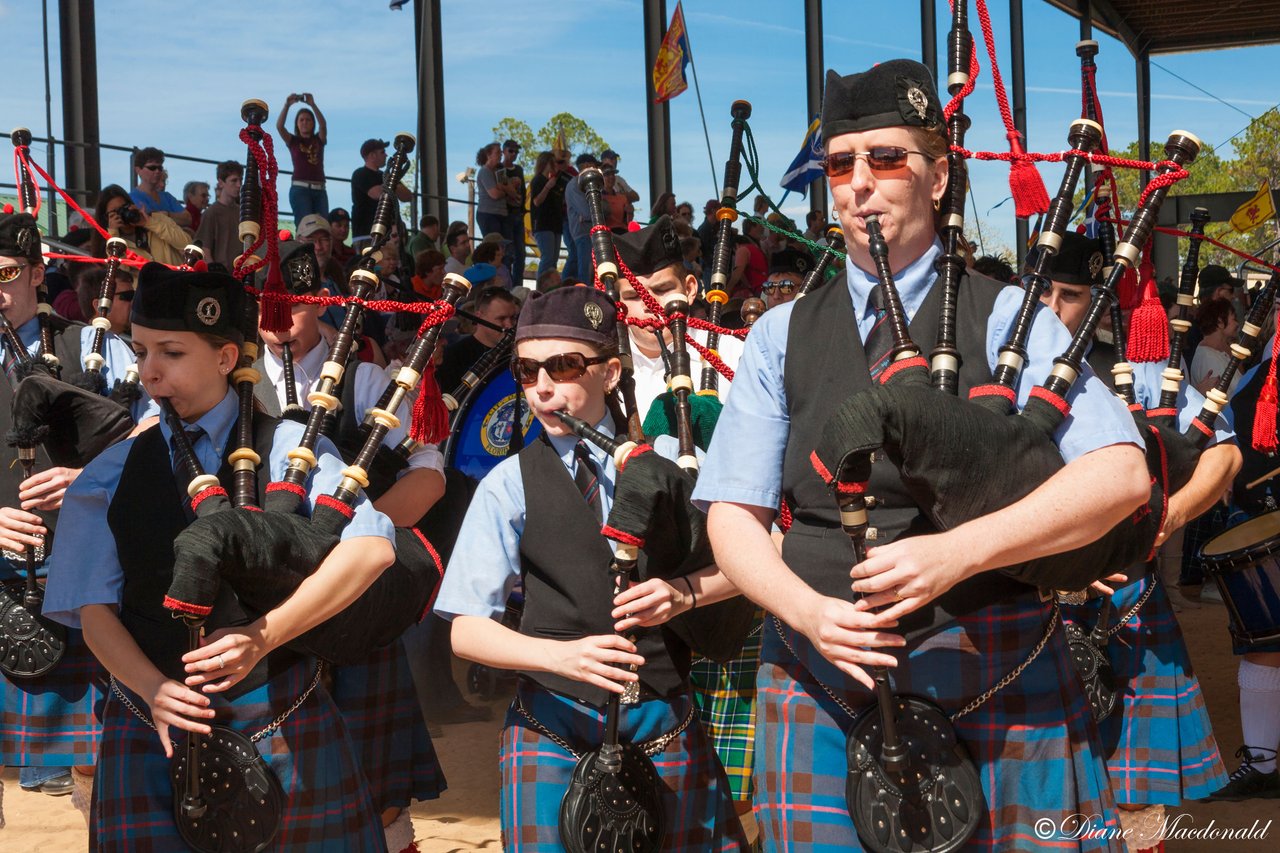What do I have in common with Andrew Carnegie (famous industrialist and philanthropist,) Alexander Graham Bell (famous scientist and inventor who invented the telephone) and John Paul Jones ( a naval commander in the American Revolutionary War and often called "Father of the American Navy?") Like them, I am an immigrant to the USA! Surprised? Read on!

Image ©Diane Macdonald. All Rights Reserved.
Did you know that the population of Scotland even today is less than 6 million? To put that in perspective, the city of New York has over 8 million people! The US State of Maine (35,384.718 square miles) is slightly larger in area than Scotland (30,265.3899 square miles.)
In the 1700s, the population of Scotland was 1,265,380, according to the very first national census which was conducted in 1755! John Paul Jones was born in Kirkbean, Scotland in 1747, so would have been counted in that census when he was 8 years old! He was truly one in a million! After helping to found the United States Navy in 1775 as a privateer, and helping the US to win the War of Independence, he later served in the Russian Navy, after Benjamin Franklin put an end to privateering. He was made a Rear-Admiral by Catherine II of Russia. He was known to be a stubborn Scot and an extremely powerful commander, willing to risk his life for victory! However, other officers in the Russian Navy were jealous of him and succeeded in having him relieved of his duty.

Image ©Diane Macdonald. All Rights Reserved.
He returned to his home in Paris where in 1792 he died of “dropsy of the chest” at the age of 45. He was buried there, but in 1905 his body was brought to America among much pomp and circumstance on the USS Brooklyn, one of a squadron of four US warships sent to bring him back to the USA. His final resting place is a crypt beneath the Naval Academy at Annapolis, Maryland. President Theodore Roosevelt presided over the ceremony in 1906.
Famous quote by John Paul Jones:
It seems to be a law of nature, inflexible and inexorable, that those who will not risk cannot win.
Alexander Graham Bell was born in Edinburgh, Scotland in 1847 and when he was 4 years old would have been counted in the 1851 census of Scotland, which at that time had a population of 2,888,742. Edinburgh, was then known as Athens of the North because of its rich association with arts and science. Both his grandfather and father were elocution specialists, and his mother, although deaf became an accomplished pianist! She home-schooled him, instilling in him a love of learning and a curiosity that made him never give up, and made him someone who was constantly solving problems! He spent only three years in the school system! Is he the most famous home-schooled student, I wonder?
Alexander carried on his father's work with the deaf, and by age 16, was in charge of the London side of the business where he moved in order to take car of his grandfather. Eventually, in 1870 his father decided to move to Brantford, Ontario, Canada, seeking a healthier climate for his family. There, Alexander continued his studies of the human voice.
He moved to Boston in 1871 to work as a teacher at the Boston School for the Deaf. Then later from his home in Boston on March 10, 1876, by telephone he summoned Mr. Watson, his assistant, who was in the next room with the words, “Mr. Watson, come here. I want you!” He formed the Bell Telephone Company in 1877, and the rest they say is history!

Image ©Diane Macdonald. All Rights Reserved.
Listen to the voice of Alexander Graham Bell, made possible with modern technology, here. Can you hear the Scottish accent? I find it quite fascinating to listen to. It's like listening to a ghost from the past!
A famous quote from Alexander Graham Bell:
When one door closes, another opens; but we often look so long and so regretfully upon the closed door that we do not see the one which has opened for us.
Andrew Carnegie, a great philanthropist (and known as the father of the American steel industry) was born in Dunfermline, Scotland in 1835, the son of a weaver. The population of Scotland during the 1841 census when Andrew was 6 years old, was 2,620,200. Following an economic depression in 1848 when steam looms put his father out of business, in poverty the family emigrated to a suburb of Pittsburgh in the United States, where young Andrew started work in a cotton factory as a bobbin boy. At age 14 he became a telegraph messenger, when the Scottish Superintendent of the office, James Reid, was attracted by his Scottish accent! With his Scots determination, he had great success there!
He next worked as a clerk at the Pennsylvania Railroad. Again, he impressed his boss who said of him to the president of the railroad that he "had a little Scotch devil in his office who would run the whole road if they'd only give him a chance."
In 1861 when the civil war started, Carnegie was Superintendent of the Western division of the railroad. His boss was now Vice President, and was appointed Assistant Secretary of War in charge of military railroads and telegraphs. He and Carnegie, who was placed in charge of Government telegraph communications went to Washington D.C. Carnegie was in charge of the communications on the field at Bull Run, and was on the field there just before the first major battle of the Civil War, the Battle of Bull Run started!
He learned to invest in the stock market, and in other ventures. One such venture was the sleeping car which was invented by Theodore Woodruff. The Pennsylvania Railroad was the first in the world to use sleeping cars.
He went on to become a steel magnate. The US Steel Corporation was once known as the Carnegie steel Company before he sold it to J.P Morgan in 1901. At that time he was now the richest man in America.
He spent the remainder of his life after retirement trying to give away all his money. He founded many charities in the USA, but he never forgot the life of poverty he and his family left behind in Scotland. He established the first public library in his hometown of Dunfermline, before setting up a Trust for the people of Dunfermline to be used in various ways to promote the well being and enrichment of the people of the town. The Trust runs the Andrew Carnegie Birthplace Museum, where of course ADMISSION IS FREE. He also established in 1901, with the unprecedented gift of $10,000,000, the Carnegie Trust for the Universities of Scotland, yielding about $141,000 a year. To put things in perspective, at that time government funding of the universities was approximately only $70,500 a year!
Image ©Diane Macdonald. All Rights Reserved.
My image can be licensed via Getty Images here
The Trust was established “to improve and extend the opportunities for scientific research in the universities of Scotland” and to enable university attendance by “the deserving and qualified youth of that country to whom the payment of fees might act as a barrier”.
The most famous quote by Andrew Carnegie:
The day is not far distant when the man who dies leaving behind him millions of available wealth, which were free for him to administer during life, will pass away 'unwept, unhonored, and unsung,' no matter to what use he leaves the dross which he cannot take with him. Of such as these the public verdict will be, 'The man who dies thus rich dies disgraced.'
It's a known fact that the more money Andrew Carnegie gave away, the more money seemed to come his way!
NATIONAL TARTAN DAY
So, is it coincidence that April 6th is National Tartan Day in the United States? Not at all, for it was on this date in 1620 that The Declaration of Arbroath was signed! It was a letter written to the pope by the barons and the people of Scotland asking him to acknowledge Robert the Bruce as Scotland's rightful king and to recognize Scotland's sovereignty as a nation.
I leave you with the the most famous quote from The Declaration of Arbroath:
As long as but a hundred of us remain alive, never will we on any conditions be brought under English rule. It is in truth not for glory, nor riches, nor honours, that we are fighting, but for freedom - for that alone, which no honest man gives up but with life itself.
Did you know that the American Declaration of Independence was based on the The Declaration of Arbroath? No? Well you know now! So, it should come as no surprise that almost half those who signed the American Declaration of Independence were Scottish or of Scottish descent. That's why today is celebrated as NATIONAL TARTAN DAY!
To join this new challenge, this is all you have to do:
- Use YOUR OWN photography
- Use the tag #nationaldays
- Check the web on sites like this for the day's challenges to choose from
- Write a post daily, or as often as you like
- Anyone can join in, but nominate 2 people if you like
- Copy and paste the challenge guidelines into your post
If you wish to participate in the #wiwcontest for this week, you will find the theme and the rules here. Any SBD donations towards the rewards would be most welcome.
Thanks for taking the time to read this! I appreciate it. Please check out my photography-101 account here for tips and tutorials about photography.

